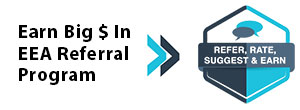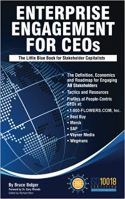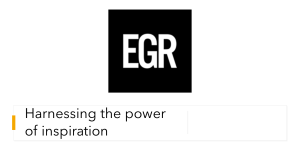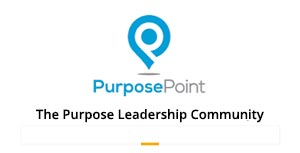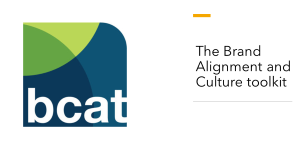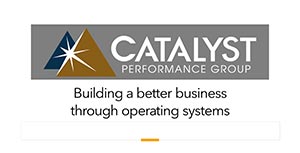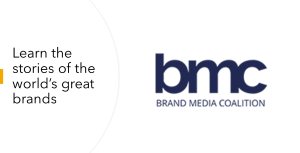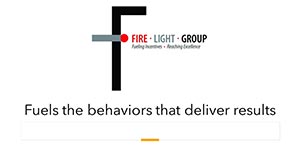Total Quality Management for People: How to Enhance Customer Satisfaction While Enhancing Efficiency
By Bruce Bolger
What Is TQM for People
The Premises
The Implementation Process
Impact Metrics
Click here to subscribe to the ESM weekly e-newsletter.
Most organizations today face two imperatives: the need to enhance or at least maintain customer satisfaction while finding ways to improve efficiency, lower costs, or enhance revenues by finding new ways to create value. Total Quality Management for People uses principles long proven in manufacturing to engage and involve all relevant stakeholders in a continuous improvement process that authentically rewards teams or individuals for meaningful contributions.
Want to get everybody on your team or in your organization excited about the mission? Involve them in the same processes proven to work in the world of total quality management in manufacturing: gainsharing—engaging all relevant stakeholders involved in the process of continuously improving the processes used to fulfill the purpose, goals, and objectives of your team or organization. This is accomplished by giving them voice, training and reinforcement, ongoing communications, a culture of appreciation and recognition, and concrete customer-centric goals designed to have a measurable impact on the organization’s purpose, goals, and objectives.
Total Quality Management for People brings to service industries and related employees the processes necessary to create a culture of continuous improvement in external and internal customer satisfaction, cost and process efficiency, new products and services offerings, or other sources of value creation or risk mitigation efforts. This article provides an overview of the framework and implementation process to do what happens every day in factories around the world: regularly finding new ways to create customer satisfaction through better products or lower costs by engaging all stakeholders in the process with an opportunity for gainsharing when successful.
The International Center for Enterprise Engagement, a stakeholder engagement firm in Brainerd, MN, provides program design, implementation, and impact metrics that include selection of technologies based on the need of each company to streamline implementation, alignment, and impact measurement.
A solution for do-it-yourselfers. For those organizations or solution providers that prefer to learn the processes of TQM for people on their own, the ICEE’s affiliate, the Enterprise Engagement Alliance, provides a complete learning and certification program for practitioners and solution providers.
What is TQM for People
Total quality management principles for people are embedded in a simple to follow roadmap known as ISO 10018, specifically designed by ISO 9001 quality management working group members to apply total
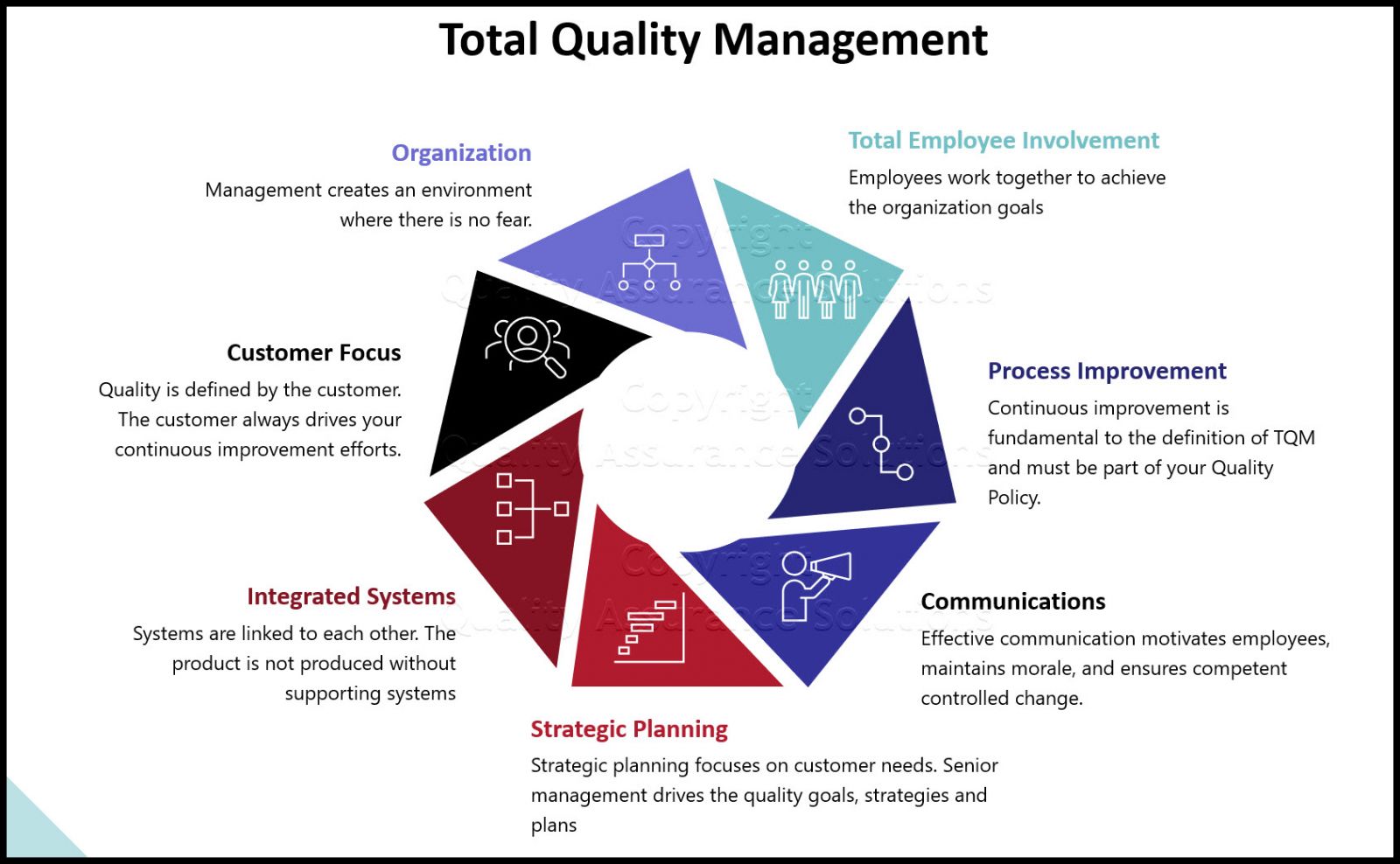 quality management principles to office workers along with manufacturing. No organization needs to become certified in ISO standards to benefit from the practical holistic standards long verified by practice in manufacturing.
quality management principles to office workers along with manufacturing. No organization needs to become certified in ISO standards to benefit from the practical holistic standards long verified by practice in manufacturing. The concept is simple: clearly define the purpose, goals, objectives, and values of the organization or a specific team effort, and deploy the following holistic approach commonly known in TQM as gainsharing—giving everyone a stake in success.
The process can easily be tested within a team or division before being rolled out to the entire organization.
A proven process. Purpose statements alone rarely make a difference. They become real when people see a connection between that purpose statement, what they do, and how they benefit when they help fulfill that purpose or its related goals, objectives, and values. TQM for people works because it gives people a meaningful stake in success, not only in rewards and recognition but the personal satisfaction that comes from fulfilling a mission. These practices are followed in an estimated 1.3 million factories around the world, not to mention countless others that choose not to get certified in their practices.
The Premises
Employees and other stakeholders often know about many areas of potential waste, inefficiencies, safety risks, or value-add opportunities, and yet few organizations take advantage of this valuable brain trust. Ironically, the effort to create a culture focused on enhancing cash flow and cost savings costs little in terms of financial outlay; however, to be effective, it requires CEO and C-suite commitment, plus the need to integrate the program into training, communications, collaboration, appreciation, recognition, and rewards, and results tracking. This is not always easy in siloed organizations, which is where enterprise engagement technology comes in.
Creating a culture of cash flow and cost management goes well beyond the proverbial suggestion box. It requires a CEO passionate about building efficiency and quality into the organization at every level, and providing all relevant stakeholders with the voice, agency, tools, processes, reinforcement, rewards and recognition and feedback necessary for making meaningful suggestions to reduce costs, enhance efficiency and speed up cash flow. If the practices are being deployed at the team or departmental level, that same commitment is required of the leader.
Ironically, creating a culture of cash flow and cost management can help harmonize the interests of all stakeholders toward a common purpose, goals, and objectives that helps enhance the understanding of how the different parts of the organizations work together to create value for customers, both external and internal. Recommendations to enhance cash flow or reduce costs that have offsetting impacts on the interests of other stakeholders and issues, such as quality and service, quickly become apparent.
The Implementation Process
Here's a step-by-step guide to establishing a culture of cash flow and cost management with clearly measurable outcomes.
.png)
Caveats: The effort will fall short or fail if:
- The CEO, senior, mid-level and front-facing managers are not fully engaged;
- The effort does not become part of the culture;
- Quality or internal or customer service falls as a result;
- Siloes between training, communications, and rewards and recognition efforts prevent a holistic approach;
- The process for managing all suggestions is not prompt and efficient, or
- There is a lack of appreciation expressed for participation, regardless of whether a suggestion is adopted.
1. Establish the purpose, goals, objectives, and values of the effort.
- What does the organization seek to gain in terms of enhanced cash flow and cost savings; what is a reasonable expectation for performance improvement without undermining quality and service.
- What areas of the organization and which stakeholders are likely to have the most impact on achieving the goals.
- What information do these people need to know to make meaningful contributions and how can it be delivered over time.
- Who specifically is qualified to evaluate the different types of suggestions and how can this process be fit into their job assignments.
- What are the criteria for determining if a solution is practical; what is the nature and time frame for the projected return on investment; what investment of money or time is required; what risk if any does it create.
- Identify who will manage the day-to-day process, coordinating the communication; learning; evaluation; recognition, rewards, and appreciation; collaboration, if involved, measurement, and feedback.
- Develop a formal business plan that outlines: CEO, senior, and mid-level management responsibilities; how the effort will be embedded in communications, learning, and even management compensation if appropriate; the evaluation process and reasonable evaluation cycle-times; gainsharing, rewards, and recognition strategy and tactics, and measurement.
Probably the most important aspect of any cash- or cost-management effort is the evaluation team: the people responsible for evaluating and implementing ideas. Not only do they need to have the necessary qualifications and authority to take action, they need to have clear business rules about the time needed for evaluation and feedback to everyone who submits ideas. Anyone who submits an idea should receive immediate notification that it was received and also a status report on the outcome: whether it was it or was it not accepted and why.
3. Create very clear business rules and metrics that reflect the purpose, goals, objectives and values of the effort.
Rather than needing to comply with a specific standard, organizations can draw from standards to determine those practices and metrics material to their business. The impact of metrics can include the specific value of the suggestions in terms of cost savings or new value created; the satisfaction of internal or external customers measured by surveys; productivity measured by human capital ROI and human capital value add (measures of productivity), revenues per employee or similar metrics for external customers or distribution partners.
Using the principles of statistical process controls common to TQM, keep measurement simple: with no more than one or two impact metrics—the specific financial or related outcomes material to the organization or team’s purpose, goals, objectives and values, and then perhaps two or three to track the tactics used to help achieve those goals.
4. Provide ongoing “drip” training on different aspects of cash flow and cost efficiencies to promote ideas.
- It is unlikely that all employees understand everything that contributes to enhanced cash flow and cost efficiency, or that they will absorb a lot of information on the subject in a single sitting. Therefore, the effort needs to include an ongoing process of dripping nuggets of how-to information to all stakeholders through the organization’s already established learning and communications platforms or through enterprise engagement technology used to promote the program.
- It does not help to communicate an effort to enhance cash flow or lower costs without providing relevant stakeholders with the information they need to identify opportunities.
- Most effectively conveyed through nuggets and even basic gamification, if available through the organization’s learning platform, such learning includes: what is cash flow; what are the factors that affect cash flow; in what part of the organization or processes could one potential find ways to enhance cash flow.
- The same learning needs to support cost efficiency, including how to find cost-cuts that actually enhance efficiency and service or at least make sure that cost cuts do not have unintended consequences.
- Any major initiative in an organization requires ongoing two-way communications and reinforcement.
- Consider giving the campaign a formal name and logo to get attention.
- Highlight the campaign at organizational meetings.
- Regularly remind stakeholders about the campaign with suggestions on what kind of ideas to look for.
- Highlight suggestions that are being implemented and the people who submitted them.
- Publish periodic progress reports.
- Make sure the CEO is personally involved with recognizing people with successful submissions and expressing appreciation for all those who participate, even if the idea was not approved.
- Make it easy for employees to provide feedback on the program and respond to it in a timely fashion.
The complexity of humans goes beyond hamsters in a cage. The best outcomes are assured when one considers both intrinsic and extrinsic motivators.
Intrinsic: Active listening, expressions of encouragement, understanding, and appreciation; acts of support by management of employees.
Extrinsic: Tangible rewards clearly distinguished from compensation that can be marketed across the organization and that are proportional in value to that of the idea. These rewards can include desirable merchandise, travel or other experiences, gift cards, or carefully customized expressions of appreciation privately or publicly.
7. Measurement
Evaluate the effort on a monthly, quarterly, and annual basis, making sure to track not only the outcomes but the processes—communications, incentives, and training, etc. involved with implementation. Programs often fail because of poor implementation of one or more of the necessary engagement factors.
Impact Metrics
Results metrics can include:
- Customer and employee retention compared with previous year.
- Revenues, profits per external customer; number and value of customer referrals, compared with the previous year.
- Revenues, profits per employee, including human capital return on investment and human capital value add calculations compared with the prior year.
- Value of ideas submitted in terms of revenues, profits, cost savings, or also in enhanced efficiency.
- Improved cycle times—time required to complete work and bill a client.
- Team or individual achievement of designed performance and action metrics.
- Customer and employee satisfaction surveys, or net-promoter scores.
- Number of suggestions versus percentage accepted and general reasons why.
- Cycle time of approval or rejection of suggestions.
- Use of the enterprise engagement technology for communications, training, idea submission, etc. correlated with submission of ideas or achievement of personal or team goals to identify most effective tactics over time.
Enterprise Engagement Alliance Services
 Celebrating our 15th year, the Enterprise Engagement Alliance helps organizations enhance performance through:
Celebrating our 15th year, the Enterprise Engagement Alliance helps organizations enhance performance through:1. Information and marketing opportunities on stakeholder management and total rewards:
- ESM Weekly on stakeholder management since 2009. Click here to subscribe; click here for media kit.
- RRN Weekly on total rewards since 1996. Click here to subscribe; click here for media kit.
- EEA YouTube channel on enterprise engagement, human capital, and total rewards since 2020
 Management Academy to enhance future equity value for your organization.
Management Academy to enhance future equity value for your organization.3. Books on implementation: Enterprise Engagement for CEOs and Enterprise Engagement: The Roadmap.
4. Advisory services and research: Strategic guidance, learning and certification on stakeholder management, measurement, metrics, and corporate sustainability reporting.
5. Permission-based targeted business development to identify and build relationships with the people most likely to buy.
Contact: Bruce Bolger at TheICEE.org; 914-591-7600, ext. 230.


